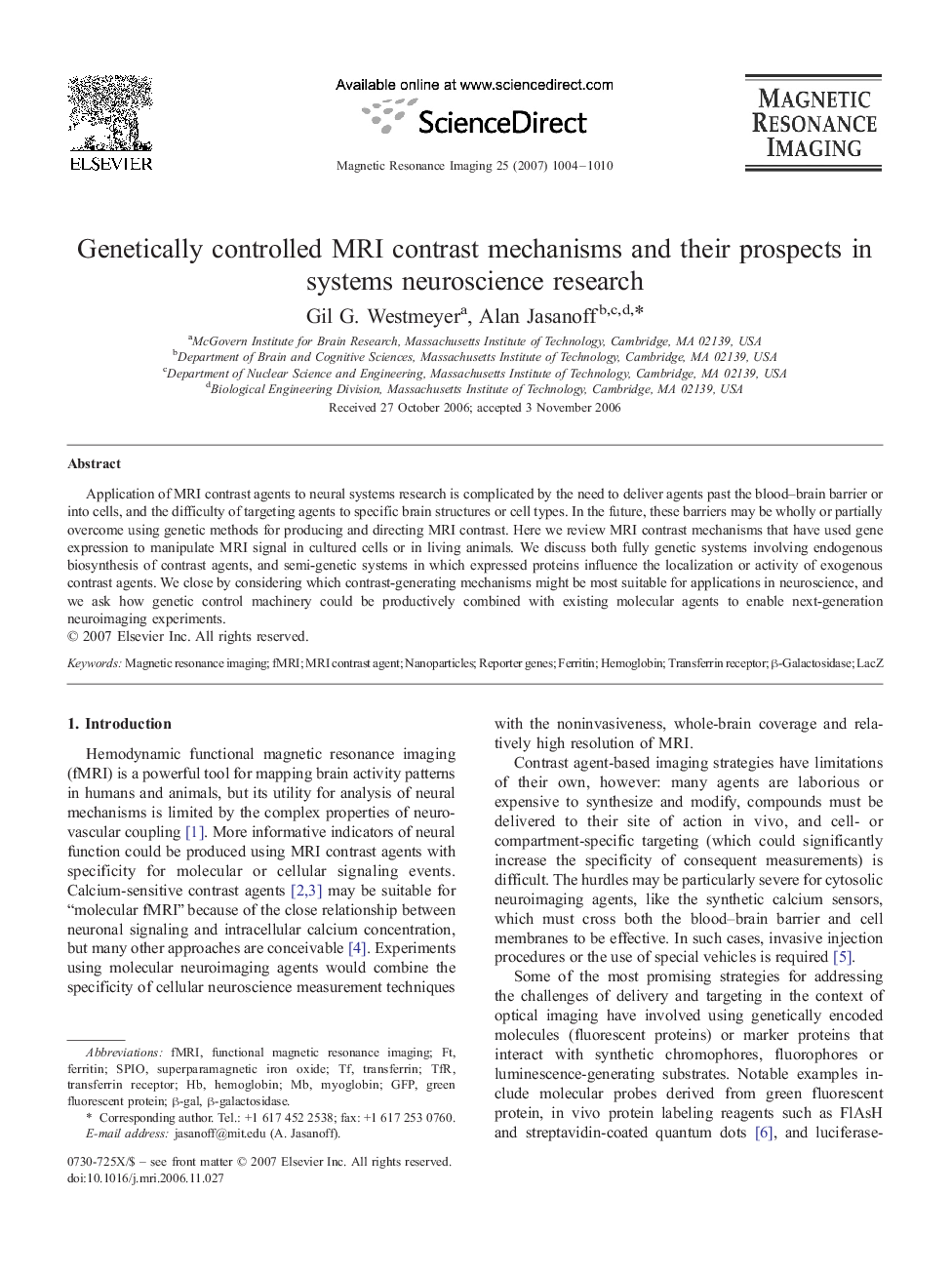| Article ID | Journal | Published Year | Pages | File Type |
|---|---|---|---|---|
| 1807541 | Magnetic Resonance Imaging | 2007 | 7 Pages |
Application of MRI contrast agents to neural systems research is complicated by the need to deliver agents past the blood–brain barrier or into cells, and the difficulty of targeting agents to specific brain structures or cell types. In the future, these barriers may be wholly or partially overcome using genetic methods for producing and directing MRI contrast. Here we review MRI contrast mechanisms that have used gene expression to manipulate MRI signal in cultured cells or in living animals. We discuss both fully genetic systems involving endogenous biosynthesis of contrast agents, and semi-genetic systems in which expressed proteins influence the localization or activity of exogenous contrast agents. We close by considering which contrast-generating mechanisms might be most suitable for applications in neuroscience, and we ask how genetic control machinery could be productively combined with existing molecular agents to enable next-generation neuroimaging experiments.
